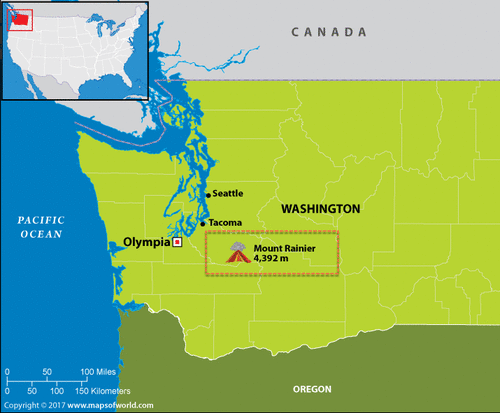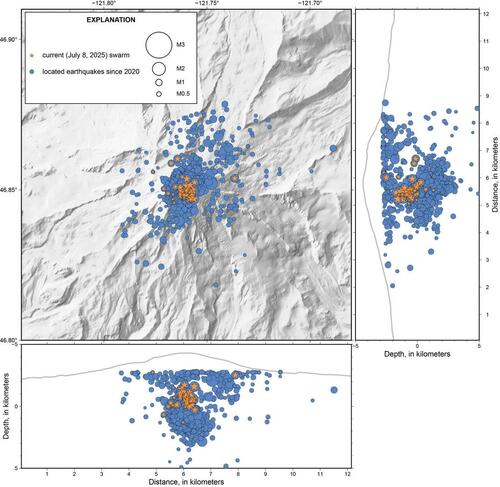
„Most Significant Seismicity Since 2009”: Quake Swarm Detected At Washington’s Mt. Rainier
The U.S. Geological Survey (USGS) at the Cascade Volcano Observatory reported Tuesday that an earthquake swarm has been detected beneath Mount Rainier in Washington State. While this marks the most significant seismic activity at the volcano since 2009, the USGS emphasized that there is no immediate cause for concern and the alert level remains at „Green/Normal.”

The quake swarm of hundreds of very small earthquakes was recorded beneath Mount Rainier around 0130 local time on Tuesday. The largest quake so far was magnitude 1.6, occurring at a depth of 1–4 miles (2–6 km) below the summit.
Mount Rainier typically experiences about nine quakes per month, with swarms like this happening 1–2 times per year, though usually with fewer events. However, the USGS stated that this earthquake swarm was „the most significant seismicity at the volcano since 2009.”

The alert level remains GREEN / NORMAL, and monitoring continues via the Pacific Northwest Seismic Network…
„Right now, this swarm is still within what we consider normal background levels of activity at Mount Rainier. Past swarms have been attributed to the circulation of fluids interacting with preexisting faults,” USGS said.
Here’s more color on what quake swarms may indicate:
- Movement of magma or fluids: These swarms are often caused by magma rising, or hot fluids circulating underground, putting pressure on surrounding rocks and causing them to crack.
- Stress along faults: Sometimes swarms occur along faults or fractures, where stress builds up and is released in small bursts.
- Volcanic unrest (sometimes): While not always dangerous, swarms can be an early sign of volcanic unrest, especially if accompanied by other changes like ground deformation, gas emissions, or thermal anomalies.
All indications from the USGS suggest that this swarm event is „normal.” Certainly something for residents in the Pacific Northwest to keep an eye on.
Tyler Durden
Wed, 07/09/2025 – 18:00

 5 miesięcy temu
5 miesięcy temu









